It’s our ambition to tell the story of industrial Manchester and its surrounding areas, as well as scientific achievements that have helped to shape the modern world. Of course, this means we’ve got lots of historic items, but we also collect contemporary objects in order to capture the continuing narrative of history.
Back in the spring, when the impact of the COVID-19 pandemic was becoming clear and we could see it was going to be remembered as a major historic event, museums all over the country knew that it would be important to collect objects relating to the virus and the resulting crisis. Each one approached it in their own way, looking for new objects relating to the pandemic that would link to and enhance the stories they tell.
The Science Museum Group’s approach
As a group of museums concerned with science, and facing a medical crisis with an inherently scientific response, the bigger question we asked within the Science Museum Group was ‘where can we draw the line?’ We knew we needed to capture the wide-reaching impact of the virus, but also that we had to identify some areas for focus, so we started by looking at the priorities for each of our five member museums:
- The Science Museum, with its world-class medical collections, is leading on collecting the medical response and scientific innovation to try and beat the virus.
- The Railway Museum and Locomotion have, naturally, been focusing on the impact on the railways and transport more generally.
- The Science and Media Museum are looking at the use of and changes to media technologies. With so much of our lives now online and remote, this is an important area to capture.
- Our priority at the Science and Industry Museum is to ensure that we represent the impact on industry.
COVID’s effect on industry
As the world’s first industrial city, industry is central to Manchester’s identity. Our collections chart the region’s history from the Industrial Revolution and the heyday of cotton production and commerce, through the decline of traditional industries and the rise of creative industries, to the innovative landscape of today.
We’ve been very interested to discover what impact COVID-19 has had on both our local and national industries. The need to social distance and keep employees safe must have implications for manufacturing procedures. How have companies changed their work practices to cope with these new requirements? We have seen that several factories have been hit by outbreaks and will be looking to collect objects that illustrate this situation.
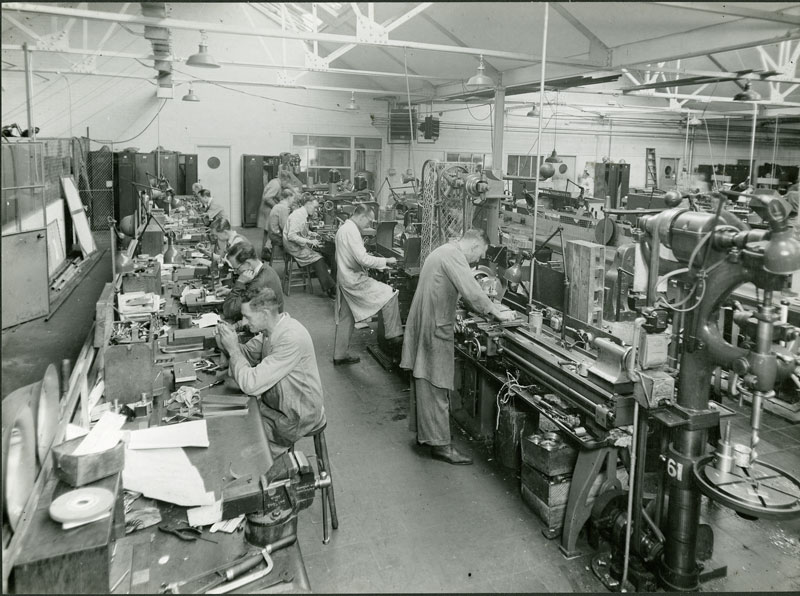

(Photographs of the interior of Williamson’s factory)
Science Museum Group © The Board of Trustees of the Science Museum
Some businesses saw their usual customers disappear overnight and it has been both inspiring and fascinating to see how they have adapted to bring their products to new audiences, maintain revenue and prevent waste. One of the industries where we have seen these changes is in brewing. Moving from a largely wholesale business model to mainly consumer sales while pubs, bars and restaurants were closed required breweries to adapt their production and sale methods. We are hoping to collect objects around this to add to our existing collection of brewing material and help to demonstrate how the industry has developed over time.

(A bottle of Boddingtons Bitter Beer, complete with original contents, c.1970s)
Science Museum Group © The Board of Trustees of the Science Museum
Other industries have changed what they produce to support the response to the pandemic. For example, many distilleries switched from making spirits to producing high-alcohol hand sanitiser that was in short supply in the early days of the crisis. Similarly, many textiles firms have started making PPE such as scrubs, surgical gowns and face masks instead of their usual products. Collecting examples of these new products is one of our key aims, as it builds upon our existing holdings of textiles industry material and shows how Manchester textile firms have adapted and responded to changing markets and situations.
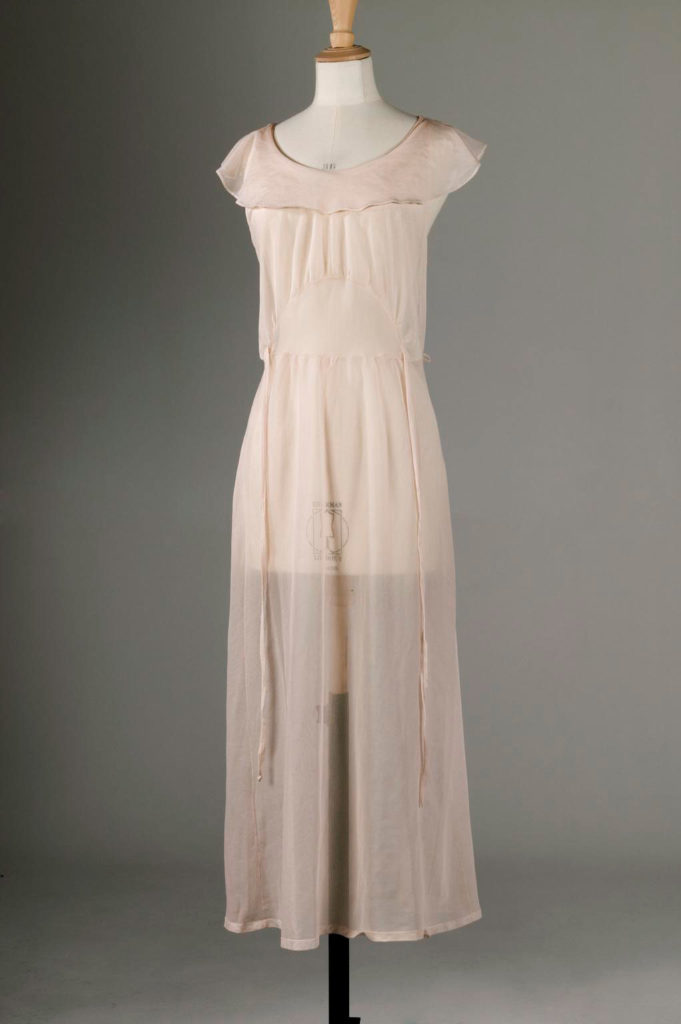
(Prototype Terylene nightdress, made by ICI, Manchester, 1948–50)
Science Museum Group © The Board of Trustees of the Science Museum
A number of companies have adapted existing products or created new ones to meet the needs of the pandemic. We are working towards collecting some of these innovative items to illustrate how manufacturers reacted to the crisis and how this moment in history has spurred on invention and innovation.
Manchester has a long history of collaboration between scientists and industry, and it’s an area of focus for all our collecting, both historic and contemporary. This is continued by the universities and businesses today and the response to COVID-19 has been no different. It’s a subject that we are particularly keen to ensure is represented in our collecting for this project.
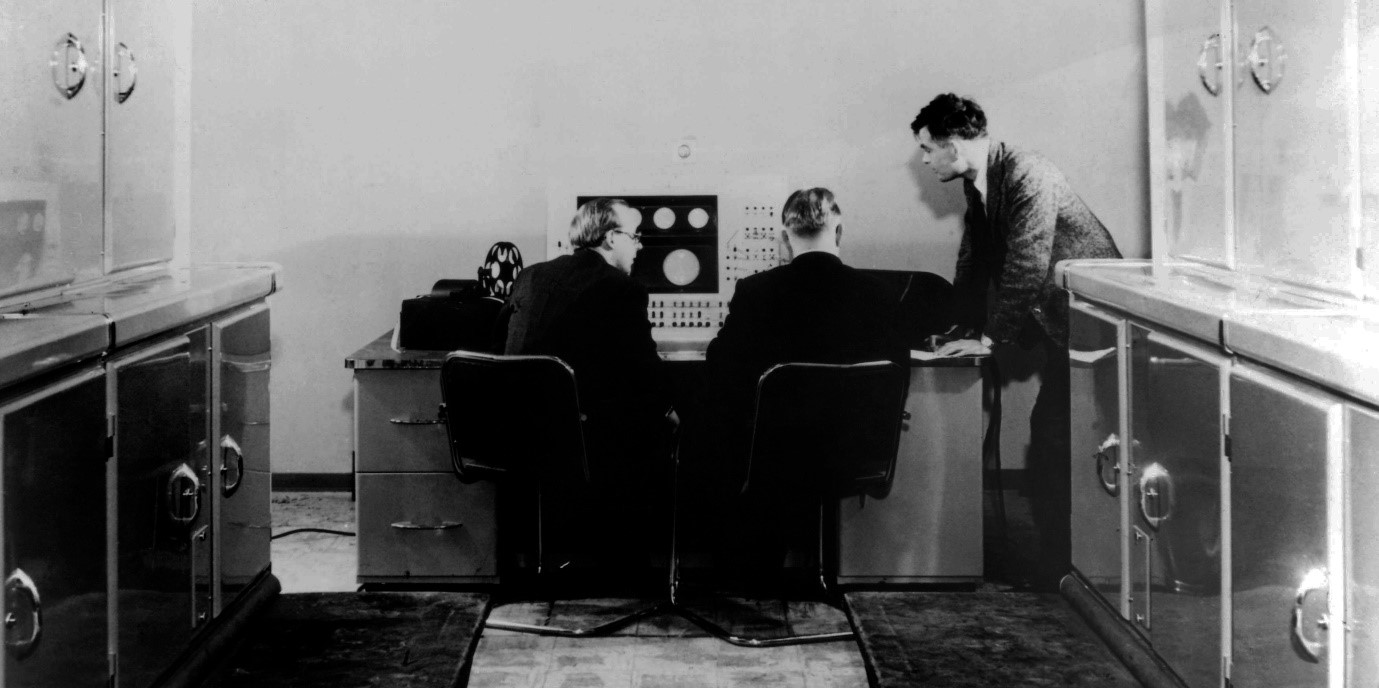
(Alan Turing and colleagues working on the Ferranti Mark I computer, which was based on the Manchester Mark I developed by the University of Manchester)
Science Museum Group © The Board of Trustees of the Science Museum
What’s next for the project?
For the past few months we have been following leads, building relationships and identifying objects that we want to collect to tell the story of this important moment in our history. From our museums being closed for a time and staff working from home, to some being furloughed and the need to minimise contact between people, COVID-19 has made physically taking receipt of donations difficult. We are finally able to start the collecting process now and we hope to begin taking possession of some objects soon. We will share them with you here on the blog.
In the meantime, we are still on the lookout for things to collect. We keep a close eye on the news to keep track of any developments but also rely on suggestions of areas, topics, companies and objects that might be relevant. In time for the Science and Industry Museum’s reopening, we created a new display exploring how COVID-19 has transformed how we work. We took recommendations from our staff and volunteers of items that signify how their lives changed during lockdown.
From coffee beans to recreate Joanna’s coffee shop habit at home, and the straw hat that kept Dani protected outdoors while furloughed, they capture a whole range of experiences. Ling’s microphone and bar model represent having to juggle working and home schooling, while Leonie’s baking powder symbolises a new way of communicating science via home experiments on Twitter.
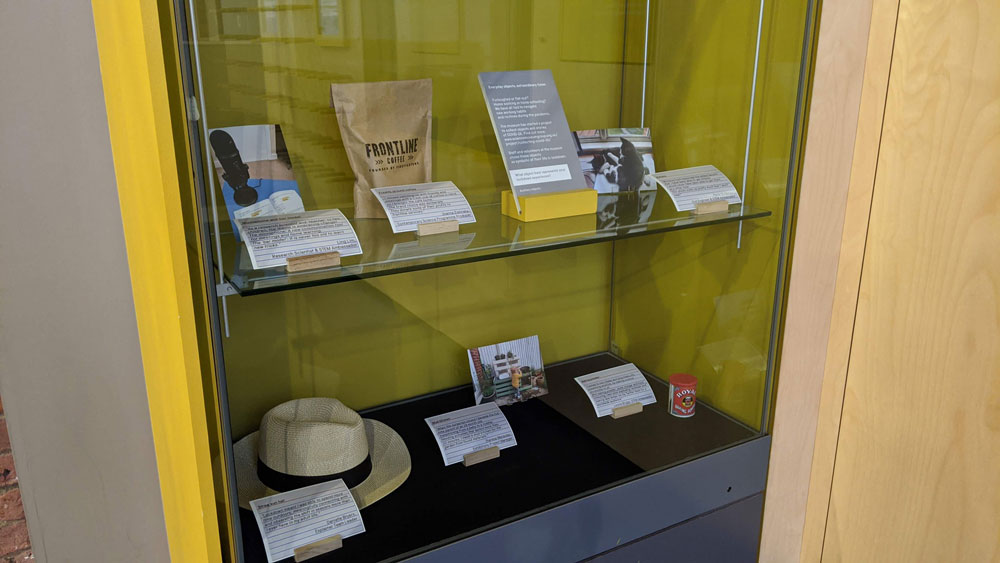
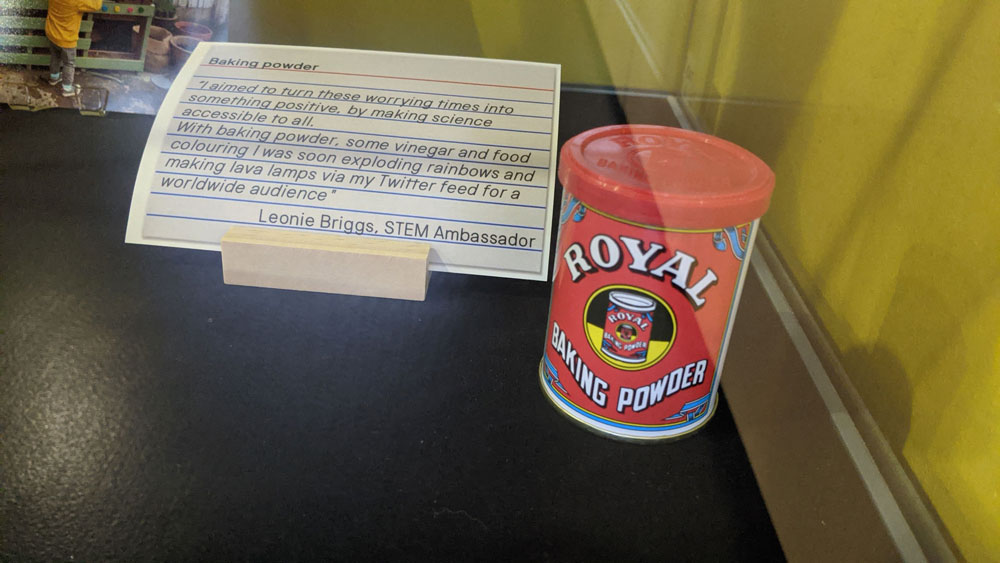
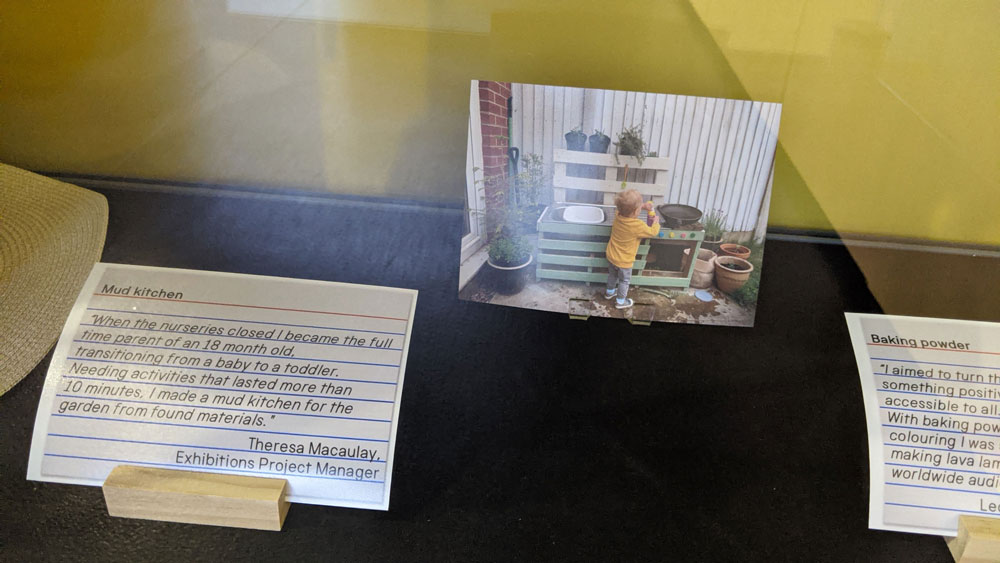


Science Museum Group © The Board of Trustees of the Science Museum
For some people, the pandemic has allowed for refocused priorities or provided time for new projects, such as building their toddler a mud kitchen like Theresa did, or enabling Paula to get kittens. This virus has affected everyone in some way, and we want to make sure that this variety of experiences from across society is represented in our collection. You can check out the display in the Conversation Space in the Textiles Gallery.
If you have suggestions for things we might collect or people we might approach, please write a comment below and we’ll add it to our list of leads to follow up.